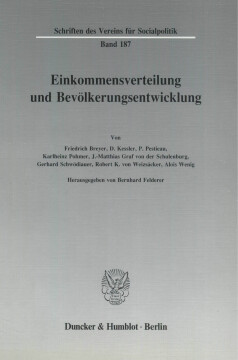Einkommensverteilung und Bevölkerungsentwicklung

BOOK
Cite BOOK
Style
Format
Einkommensverteilung und Bevölkerungsentwicklung
Editors: Felderer, Bernhard
Schriften des Vereins für Socialpolitik, Vol. 187
(1989)
